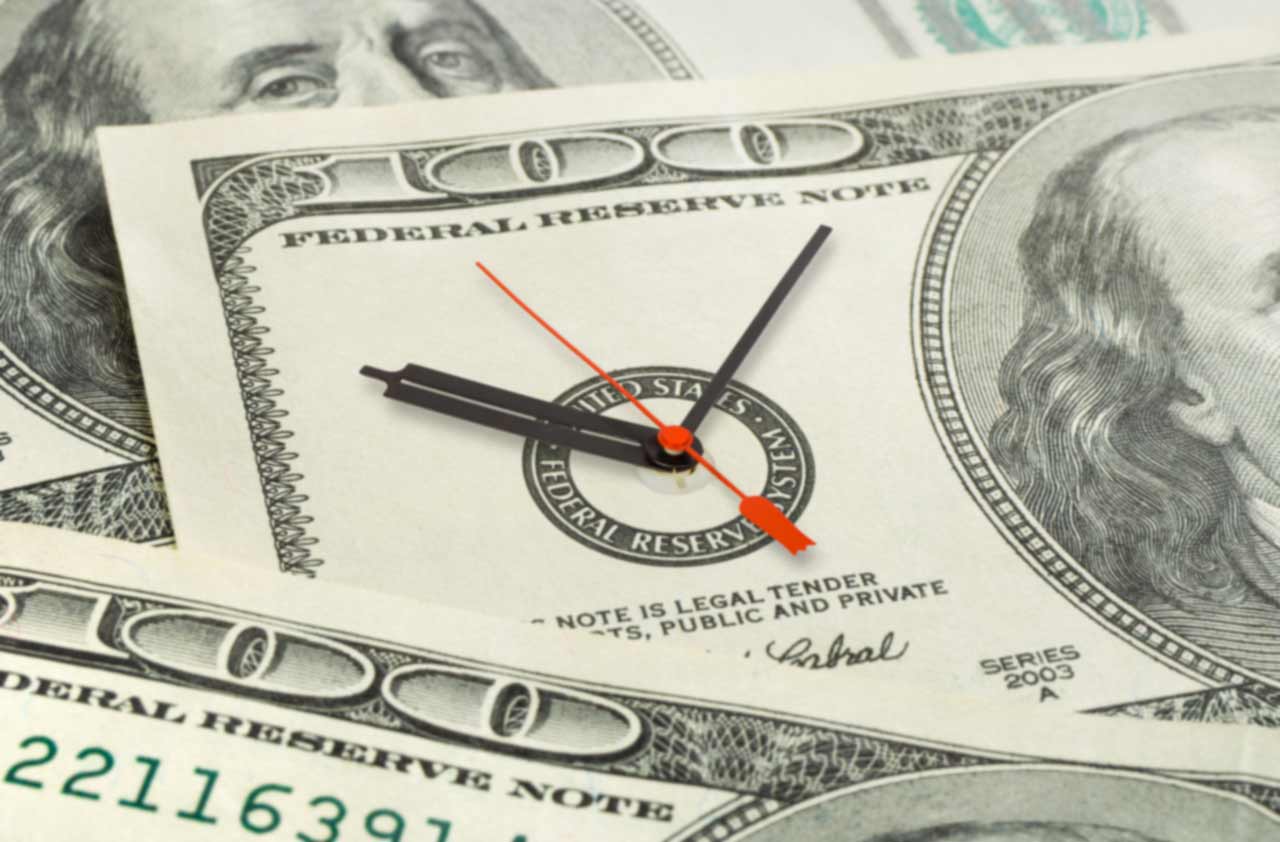Roth IRA: Convert Now or Pay Later?
Why the tax-code change should put a hurry-up on your decision to convert a traditional IRA into a Roth.


The wait is over.
If you were delaying your plans to do a Roth conversion until you knew for sure that President Trump could deliver on his tax cut promises, you have your answer.
Now is the time. And the clock may be ticking. It’s likely these low tax rates won’t last until you retire — even if your retirement isn’t all that far off.

Sign up for Kiplinger’s Free E-Newsletters
Profit and prosper with the best of expert advice on investing, taxes, retirement, personal finance and more - straight to your e-mail.
Profit and prosper with the best of expert advice - straight to your e-mail.
That’s because even though it may be great for the short term, most economic models, including that of Congress’ own Joint Committee on Taxation, show this tax plan will add at least $1 trillion to the nation’s debt over the next decade.
The problem is the government keeps kicking our debt can down the road, leaving it for some future generation to figure out. Meanwhile, the amount keeps growing — and it’s already more than $20 trillion, making it the largest national debt in the world.
And if the Fed continues to raise interest rates, the rates on government securities also will rise, which could add to the problem.
There are only a few ways this staggering burden can be reduced:
- The government can cut spending. (But it doesn’t like that idea much.)
- It can drive economic growth at a faster rate than the debt. (Republicans say this tax cut will accomplish that.)
- Or it can raise revenue by raising taxes.
If that happens and you’ve accumulated a hefty sum in your traditional IRA or 401(k) — as most workers have been trained to do over the past three decades — you could be in for a nasty surprise when you’re ready to withdraw those tax-deferred funds. (Or when you’re forced to take required minimum distributions at age 70½.)
And there’s no telling when a tax increase could happen. It could be in three years, if Trump isn’t re-elected — or maybe 10 or 20 years from now.
Think of this as a fire sale. We’re going to have much lower tax rates for at least the next few years. If you file a joint return, you can make as much as $315,000 and still be in a 24% tax bracket. So there’s a lot of room to start moving money out of traditional retirement plans and into a tax-free Roth.
Of course, to do that, you’ll have to pay the taxes on the money you withdraw now. But you should ask yourself: Would I rather pay 24% now or potentially pay 40%, 50% or more in the future?
Those percentages aren’t unprecedented.
Right now, for 2018, the highest rate you can be taxed at is 37%. In 1917, the highest tax rate jumped from 15% to 67% — and to 77% in 1918. In 1932, Congress raised taxes on top earners from 25% to 63%. And in 1944, the top rate peaked at 94% on taxable income over $200,000.
If you’ve been a diligent saver — putting money into your tax-deferred account for years and building a significant nest egg — this is an important decision to make, and the window could be narrow. Talk to your tax accountant and/or financial adviser now about the advantages of a Roth conversion and how it would fit in your overall retirement plan.
Kurt Supe and John Culpepper offer securities through cfd Investments, Inc., Registered Broker/Dealer, Member FINRA & SIPC, and Kurt Supe offers advisory services through Creative Financial Designs, Inc., Registered Investment Adviser. Creative Financial Group is a separate unaffiliated company. The CFD Companies do not provide legal or tax advice. Neither Creative Financial Group nor the CFD Companies are associated with SmartVestor or Ramsey Solutions. Neither SmartVestor nor Ramsey Solutions recommend or make an endorsement for services provided under the SmartVestor program.
Kim Franke-Folstad contributed to this article.
Get Kiplinger Today newsletter — free
Profit and prosper with the best of Kiplinger's advice on investing, taxes, retirement, personal finance and much more. Delivered daily. Enter your email in the box and click Sign Me Up.

Kurt Supe is a certified public accountant and financial adviser as well as senior partner and co-founder of Creative Financial Group (www.creativefinancialgrp.com). He holds a bachelor's degree in finance from the University of Kentucky and has nearly 20 years of experience in the financial services industry.
-
 5 Easy Weatherproofing Projects That Help Prevent Damage and Save on Insurance
5 Easy Weatherproofing Projects That Help Prevent Damage and Save on InsuranceProtect your home from storms and water damage with these simple weatherproofing upgrades — some may help reduce your home insurance premium.
By Paige Cerulli
-
 If Trump Fires Jerome Powell, What Happens To Savings and Mortgage Rates?
If Trump Fires Jerome Powell, What Happens To Savings and Mortgage Rates?President Donald Trump expressed his desire to remove Fed Chair Jerome Powell. If the president is successful, how would it impact your savings accounts?
By Sean Jackson
-
 Ask the Editor: Reader Questions — April 18, 2025
Ask the Editor: Reader Questions — April 18, 2025Ask the Editor: Taxes, April 18, 2025 — Joy Taylor, The Kiplinger Tax Letter Editor, answers questions on amended returns, property and deductions.
By Joy Taylor
-
 Four Takeaways From Filing Your Taxes to Boost Your Financial Future
Four Takeaways From Filing Your Taxes to Boost Your Financial FutureNow that another tax season is in the rearview mirror for most of us, what lessons can you take from what you learned about your finances to plan for the future?
By Kate Winget
-
 What Claims Adjusters Are Thinking vs What They're Saying
What Claims Adjusters Are Thinking vs What They're SayingAfter a natural disaster, few of us are at our best, but here's what to keep in mind when you're interacting with your insurance company's claims adjuster.
By Karl Susman, CPCU, LUTCF, CIC, CSFP, CFS, CPIA, AAI-M, PLCS
-
 Looking to Make a Job Change? How to Stand Out Like a Pro
Looking to Make a Job Change? How to Stand Out Like a ProTo make a strong first impression in interviews or when networking, skip your job title and work history and use an opening gambit that highlights your talents.
By Anne deBruin Sample, CEO
-
 First 100 Days: Trump's Impact on Your Finances
First 100 Days: Trump's Impact on Your FinancesHere are some opportunities to consider regarding investing, interest rates and tax cuts as the financial landscape shifts under the new administration.
By Daniel Razvi, Esquire
-
 What Would Happen if You Put Your Tax Refund in an IRA?
What Would Happen if You Put Your Tax Refund in an IRA?Not only could you get a tax break, but the compounding effect over 35 years could turn the average refund into nearly $14,000.
By Romi Savova
-
 Children Can't Afford to Fly the Nest? Here's How to Help
Children Can't Afford to Fly the Nest? Here's How to HelpThe high cost of living means more adult children are staying at home. Here are four ways to help financially so they can eventually spread their wings.
By Kelli Kiemle, AIF®
-
 How Much Will Car Prices Go Up With Tariffs?
How Much Will Car Prices Go Up With Tariffs?Tariffs could drive car prices up even higher, for new and used cars, as well as for American brands.
By Jim Patterson